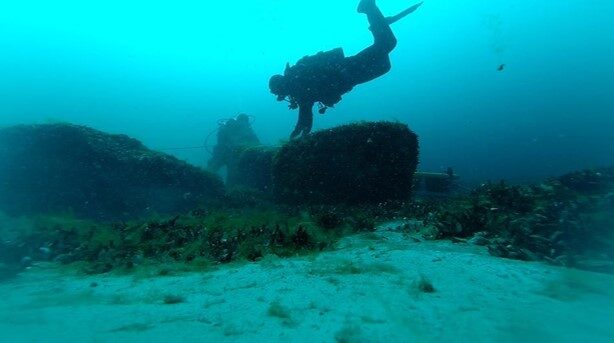
© The University of Texas at Arlington
An underwater archaeologist from The University of Texas at Arlington is part of a
research team studying 9,000-year-old stone tool artifacts discovered in Lake Huron that originated from an obsidian quarry more than 2,000 miles away in central Oregon.
The obsidian flakes from the underwater archaeological site represent the oldest and farthest east confirmed specimens of western obsidian ever found in the continental United States.
"In this case, these tiny obsidian artifacts reveal social connections across North America 9,000 years ago," said Ashley Lemke, assistant professor of sociology and anthropology at UT Arlington. "The artifacts found below the Great Lakes come from a geological source in Oregon, 4,000 kilometers away- —
making it one of the longest distances recorded for obsidian artifacts anywhere in the world."The unique study was a multi-faceted pursuit with divers in the water and researchers in the laboratory from UTA, the University of Michigan, Lake Superior National Marine Conservation Area, the University of Missouri Research Reactor Center, the Northwest Research Obsidian Studies Laboratory and the University of Georgia. Their combined work,
"Central Oregon obsidian from a submerged early Holocene archaeological site beneath Lake Huron," was published last month in the journal
PLOS One.
Because the site was underwater and undisturbed, researchers systematically and scientifically recovered the
obsidian, a form of volcanic glass that was used and traded widely throughout much of human history as a prized material for making sharp tools."These are very small pieces that have very large stories to tell," Lemke said. "Obsidian from the far western United States is rarely found in the east."
Lemke is a leader and innovator in the field,
serving as the chair of the Advisory Council on Underwater Archaeology, an international group dedicated to underwater archaeology and the preservation of underwater cultural resources. She is an expert on submerged ancient sites in the Americas and has researched other areas such as the Gulf of Mexico and Atlantic Ocean.
The find in Lake Huron is part of a broader study to understand the social and economic organization of caribou hunters at the end of the last ice age. Water levels were much lower then; scientists have found, for example, ancient sites like stone walls and hunting blinds that are now 100 feet underwater.
"This particular find is really exciting because it shows how important underwater archaeology is," Lemke said. "The preservation of ancient underwater sites is unparalleled on land, and these places have given us a great opportunity to learn more about past peoples."
"The preservation of ancient underwater sites is unparalleled on land,
R.C.